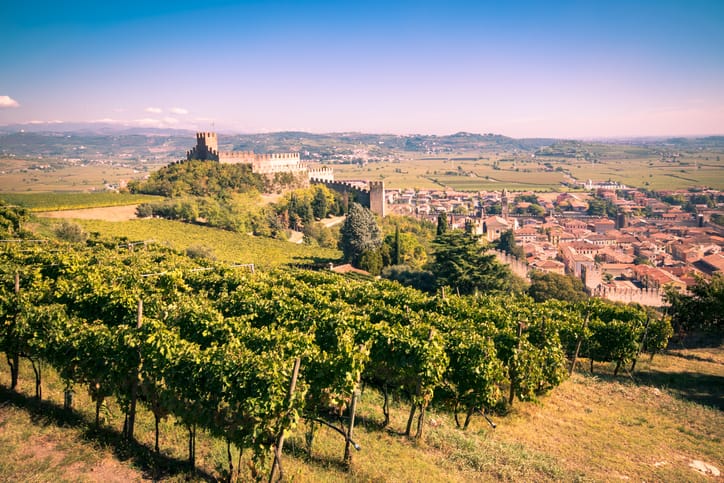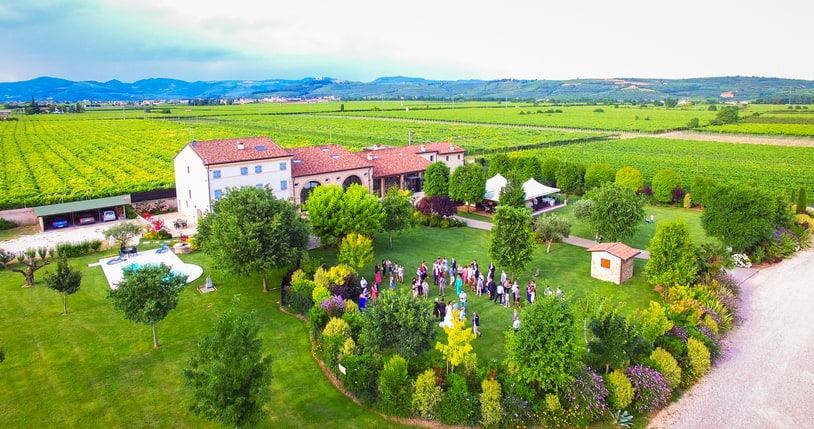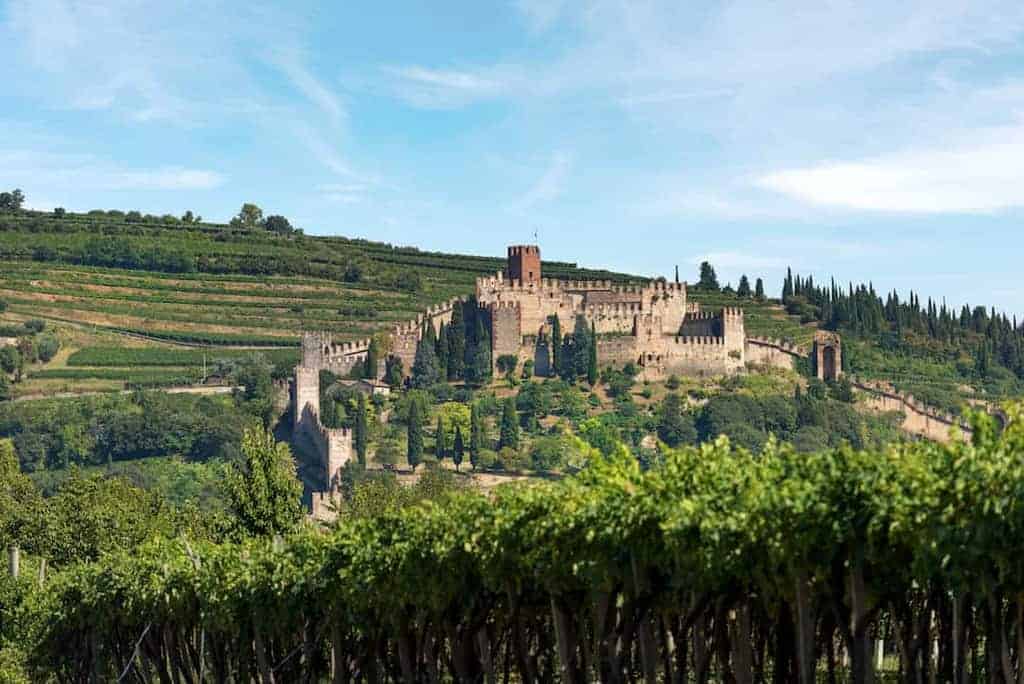Last Updated on February 7, 2020.
Garganega Wine Profile
If you haven’t heard of Garganega, fear not! Most people probably have not but very well may have tasted it at some point: this tongue-twister of a grape is the main grape of Soave, that ubiquitous Italian white wine found on every wine list. It’s also the main grape of the lesser-known Gambellera region, and makes up over 70% of white wines throughout the Veneto in Northern Italy.
Although located on the opposite end of Italy, Sicily is also home to a thriving Garganega crop. There, it’s known as Grecanico Dorato and was only linked to Garganega through modern DNA testing. However, like so many Italian grapes, it has many different localized pseudonyms throughout the country.
Garganega (Soave) Tasting Notes
DOC laws permit up to 30% of other white grapes blended in but few producers actually take advantage of this, so Garganega is fairly easy to identify. On the nose, expect melon, white peach, and some green herbal notes. On the palate, the peach and melon mix with a zestier citrus and layers of almond are typically present. As it ages, it develops a richer texture and the nutty notes become more pronounced.
Garganega is also used to produce both spumante (sparkling) and recioto (sweeter) style wines. Recioto di Soave, made by appassimento method, is known to have honeyed apricot and lush papaya and mango notes and makes an absolutely delicious option for dessert.
Food Pairing Soave Wines
For pairings, Soave and other Garganega-based wines pair with mussels, scallops, lobster, a variety of fish, and grilled poultry. Consider using an herbal base, like chives in butter, to highlight the green notes in the wine. For older wines, trout almondine or soul meuniere would work beautifully because they would play off of the nutty notes.
Wine Growing Regions for Garganega
Soave DOC is the most famous Garganega-producing region, which is located in the Veneto in northeastern Italy. As previously mentioned, it is found throughout Sicily as well under the name Grecanico Donato. Beyond those two regions, it can also be found Friuli, Lombardy, and Umbria.
At this time, very little if any Garganega is produced outside of Italy. However, we believe this highly versatile grape would be an interesting experiment for intrepid New World winemakers to try cultivating and vinifying!
Check out some of these Garganega varietal wines and Garganega-based blends:
- Pieropan Soave Classico “La Rocca”, Veneto, Italy
- Giuseppe Quintarelli Bianco Seco, Veneto, Italy
- Gini La Frosca, Soave, Veneto, Italy
- Inama Soave Classico, Veneto, Italy
- Acinum Soave Classico, Veneto, Italy
- Pieropan Le Colombare, Recioto di Soave, Veneto, Italy
Learn About These Other Wine Grape Varieties
Written By Jamie Metzgar
Jamie Elizabeth Metzgar began her career in wine by pouring in a tasting room on the East End of Long Island, NY. After moving to New York City, she landed a position at Chambers Street Wines where she was encouraged to pursue wine education at the Wine & Spirits Education Trust (WSET). She earned Level III certification there and has since earned California Wine Appellation Specialist and Certified Specialist of Wine certifications as well. After way too many moves, she has recently landed in Northern California where she is compiling an unofficial roster of dog-friendly tasting rooms.
Fruit
Melon, White Peach, Melon, Zesty Citrus (Dry Soave and Gambellara)
Honeyed Apricot, Lush Papaya, Mango (Sweet Garganega-based wines)
Earth & Additional Complexities
Green Herbal Notes and Almond (nutty and richer textures evolve with aging)
The Structure and Style of Soave and Garganega-based Wines
Body Medium - Minus
Sugar Usually Dry
Acid High
Alcohol Moderate (11% - 13.5%)
Tannins Low
Seafood
For pairings, Soave and other Garganega-based wines pair with mussels, scallops, lobster, a variety of fish, and grilled poultry. Consider using an herbal base, like chives in butter, to highlight the green notes in the wine. For older wines, trout almondine or soul meuniere would work beautifully because they would play off of the nutty notes.


